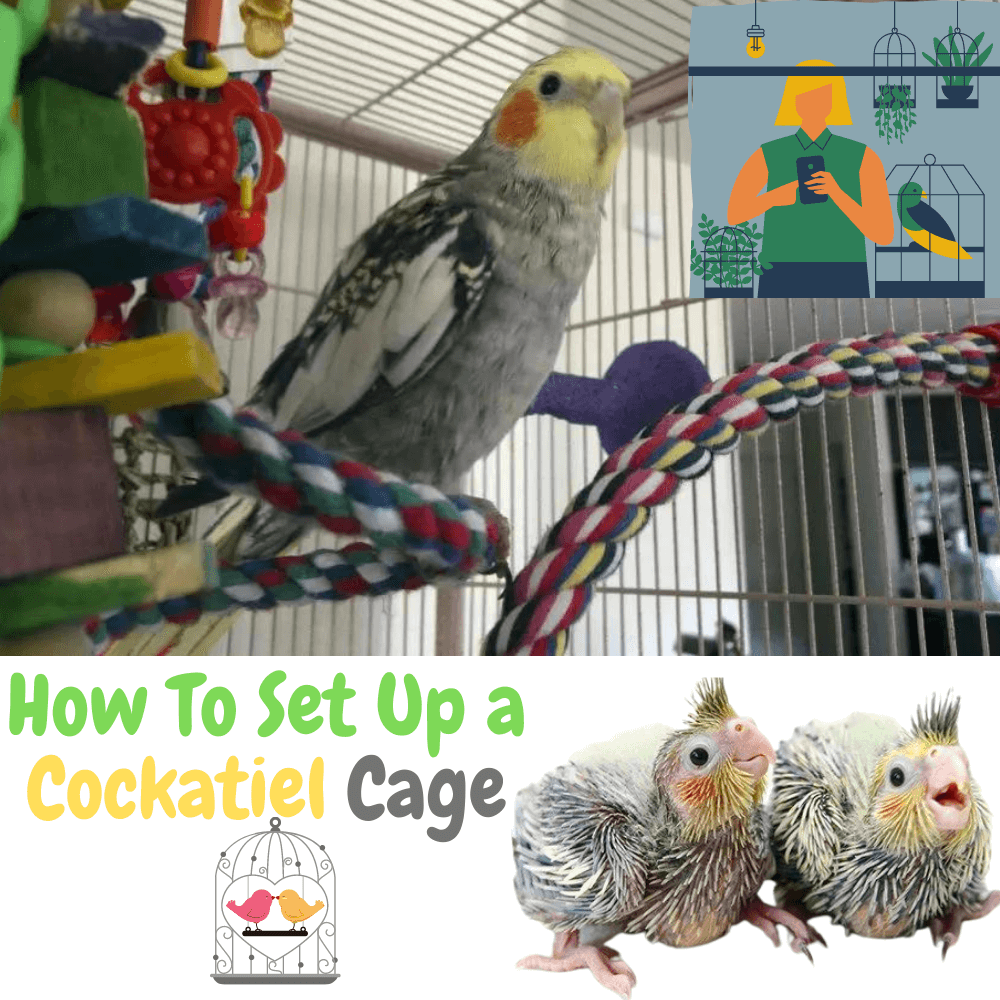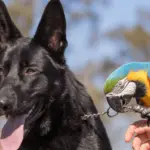
Are you wondering how to arrange your cockatiel’s cage? and How To Set Up a Cockatiel Cage Do you want your companion to feel the best in his new home?
You’ve come to the right place because our experts know exactly how to help you!
To arrange the cage of a cockatiel, you will have to choose a suitable cage. But also all the materials necessary for the well-being of the animal. It is imperative to select the feeders, drinkers, toys, and perches carefully and to place them carefully.
In this article you will discover:
Which cage to choose
How much, where, and how to use perches
Which feeders and drinkers to use
Useful toys for your cockatiel
Once you have read this article, you will know exactly how to welcome your cockatiel in the best possible conditions. This will allow you to focus on the fun part: enjoying your new friendship.
Enough wasted time, let’s get to the heart of the matter!
COCKATIEL CAGE SETUP | What’s in my birdcage?
SOURCE:saeshell
How To Set Up a Cockatiel Cage
Which type of cage to choose
Selecting the best cage deserves a full-fledged article, but we’ll just summarize that.
The most important characteristic of a cage is the spacing of the bars according to the size of your bird.
Cockatiels need a spacing of about 1.3 cm between the bars.
Yellow cockatiel
For comparison, a conure will need 1.9 cm. While an Amazon will need 2.5 cm of spacing between the bars.
This is a matter of safety, as a bird can get its head stuck in bars too far apart for its size, or even escape.
Giving your bird time to get out of their cage is great, but you don’t want them to get lost unsupervised. It might get tangled in curtains, get lost under the sofa, or even squeeze in a hole.
When planning your bird’s space, think about what will keep them healthy and happy in the wild. Then make some adjustments to make it possible for you.
Cockatiel in nature
The Perches
A bird is on its feet all the time, even when sleeping.
To begin with, you need to plan for something to perch inside the cage. Shapes and widths must vary. Indeed, in nature, trees always provide branches of different sizes.
A bird’s legs need to regularly adjust to different widths to keep the joints flexible. Without it, serious paw problems can develop in the animal.
Use a foot perch to keep the claws clipped
Another common problem is clipping the claws.
In the wild, birds wear down their fingernails when climbing and landing on rough surfaces. Indoor birds, on the other hand, need more help keeping their fingernails under control. The ideal is therefore to have a foot perch.
It will thus be optimal to provide rough surfaces to wear down the nails and variable widths to stretch the joints of the paws. Keep in mind that for a cockatiel, all perches will need to be quite small.
Foot perches attach securely to the side of a cage and don’t take up too much space. Keep in mind that they cannot completely eliminate the need for nail clipping every now and then. Nevertheless, it will help you immensely.
Foot perches are not to be used all year round. It is best to remove them from time to time.
Rope perches
Rope perches come in many widths and lengths and have the excellent property of being flexible.
They have a wire core and can be bent into any configuration:
- Straight across the cage
- Right angle
- Or zigzag
Cockatiel Cage Tour | Cockatiel Cage Set-Up
SOURCE:Love of Pets
Placement of perches inside the cage
The cage should contain enough perches so that each bird has a comfortable place to rest. But not too much so that space is not crowded.
Remember that birds tend to prefer a higher place because they feel safer there. If a bird arrives in a new cage with multiple levels of perches available, it will usually gravitate to the highest and ignore the others. Unfortunately, it ends up not using all of the available living space.
A good way to make a new bird feel more comfortable using more of the cage is to set up perches that are no higher than the medium level. Then, after giving it a few weeks to settle in and decide on its favorite spots, add a high perch. As he is now familiar with all mid-level perches and feels safe, he will not abandon the old ones and will now have an additional perch.
The best perches for your cockatiel
Ordinary stud perches typically included in the price of a standard cage are unfortunately of the worst kind. While those that offer irregular widths and contours are much better.
That’s why we offer you the best perches to keep your coconut’s legs in excellent health.
Discover our collection of perches suitable for grinding legs and Pedi-perches by clicking on the image below.
Feeders and Drinkers
How many food bowls will the cage need?
A cage should have at least as many feeders as cockatiels, and preferably an additional one. An extra bowl will give each bird a choice of where to eat. This will make the bird feel safe.
The metabolism of birds, and in particular cockatiels, is high and they must have access to food at all times during waking hours.
SETTING UP A COCKATIEL CAGE
SOURCE:Aaron Lewis
Should the food bowl be placed on the floor or on the side of the cage?
Birds feel more vulnerable on the cage floor (the floor is where predators hide). It is, therefore, better to secure the food bowls to the sides of the cage rather than placing them on the floor.
Do Food Bowls Need a Hood?
Many food bowls are made with caps to minimize clutter and waste. But the problem is, some birds are afraid to put their heads in a hooded food bowl. From the perspective of a small creature always on the lookout for danger, this type of bowl doesn’t seem safe.
Bowl or bottle of water?
For water, there are two choices:
- an open bowl
- Or a bottle of water
An open water bowl can collect food, dust, or debris, while a water bottle can get clogged. The best idea is to have both on hand at all times.
When purchasing a water bottle, make sure you have one that attaches securely to the side of the cage. Gourds that are supposed to be attached to the cage with a loop of wire tend to slip.
A block of cuttlefish bone and minerals
A cuttlefish bone and a mineral block provide your bird with the nutrients it needs and allow it to exercise its chewing instinct. A bird’s beak is always growing, and a chewing hole helps it exhaust it.
These items are quite inexpensive, and having both of these items is beneficial for your bird. We talk about it in our article which explains how to file your parrot’s beak.
Toys for your Coco
To choose the best toys, consider what cockatiels like to do in the wild. Parrots have a strong chewing instinct, especially females, who need to nibble on the wood during nesting.
The toys that give the opportunity to chew and shred well are always popular. Birds also like to preen their feathers and those of others. Toys that have a lot of loose strands appeal to their preening instinct.
One thing that all cockatiels love is bell toys. The sound of the bell and the possibility of catching the clapper are endless distractions. Many birds also like to wear a bell as a hat even if here the connection with nature is difficult to find …
Put your Feathered Friend in Total Comfort
As you can see, setting up a cockatiel cage must be done carefully and thoughtfully so that the bird feels safe.
Thanks to this article, you are now able to welcome a cockatiel in the best possible way.
To make your cockatiel feel good, we offer you his favorite toys that we have mentioned above. Bell toys, rope, through chewing toys, everything is there.
Discover our collection of toys by clicking on the image below.




















